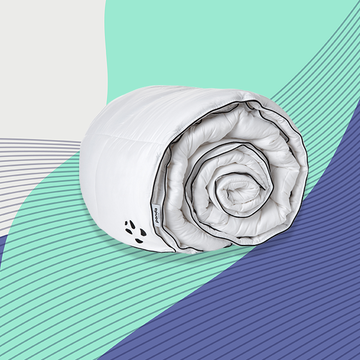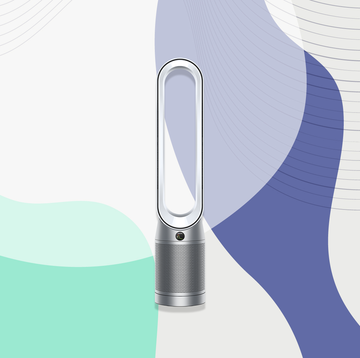Lucid dreaming is when, whilst fully asleep, you become aware that what you're experiencing is not reality – that you are dreaming.
When in this state, you can begin to control what happens: starting to fly like Peter Pan or run like Dina Asher-Smith.
Here, writer Daisy Buchanan details her journeys into this ethereal world – and what you can do to induce it in your own nocturnal adventures.
With the famous cinematic exception of Inception, there’s nothing more boring than someone else’s dream. So I’ll try to be concise when I tell you about this one.
What it's like to lucid dream
I was three years old when I dreamt I was in a fire station, wearing yellow wellies and a coat over my nightie.
I remember saying to one of the firemen (yes, I was a gender-biased infant), ‘I know this is a dream because I don’t know any firemen, I don’t have any yellow boots, and if this was real life I wouldn’t be wearing a nightie.’
To test my theory, I climbed up a pole with ease – something I’d have found impossible in reality – and slid down. I didn’t know it then, but I was having a lucid dream – a state in which you’re aware the dream is happening and you can control your actions within it.
And research suggests it could serve a function beyond boring your partner/friends/colleagues to tears.
Lucid dreaming benefits
This specific intersection between sleep and waking consciousness makes the state a sleep scientist’s wet dream.
In a 2014 study, researchers from the University of Lincoln found that lucid dreamer showed greater insight in waking life, with better than average problem-solving abilities.
More recently, research published in the Journal Of Sports Sciences explored the potential for lucid dreaming to improve focus and performance in athletes.
Yet it’s the use of this technique for managing mental health that’s piqued my interest.
Anecdotally, it’s purported to help ease feelings of stress and anxiety, and it’s even been trialled as an intervention for PTSD to curtail recurrent nightmares.
As someone who struggles with an anxiety disorder, I want to know if I can replicate the lucid experience I had as a child, and if doing so could help me now.
And so to sleep school. Specifically, Awake Academy – a lucid dreaming video course led by author and mindfulness expert Charlie Morley, who’s been teaching lucid dreaming for nine years.
He explains that the first step to accessing your subconscious in its dreaming state is to remember your dreams upon waking.
Most of us will typically have four or five dream periods a night, and key to recalling them is keeping a journal by your bed.
Learning how to lucid dream
I begin by sleeping with my phone next to my pillow (in airplane mode –I’m not a masochist) and, when I jolt awake at 4am, I make as many notes as I can (‘Hannah friend christening gatecrashing dinner’).
When I wake up the following morning, I fill in the blanks – and I’m surprised by the detail those few words call to mind.
In said dream, I was supposed to meet my friend Hannah for dinner, but I got thedate wrong and ended up at her friend’s daughter’s christening, where everyone was too polite to tell me that I wasn’t invited.
I could remember the dust mites dancing through the air, highlighted by the sunlight coming through the church window. And a strong feeling of shame. It occurred to me that I often wake up feeling similarly unsettled, just without knowing why.
Having successfully committed the detail of a dream to memory, I’m ready for phase two.
Lucid dreaming is about seizing control over your subconscious mind, but, much like seizing power from a preposterous president, it isn’t easy.
Morley suggests that I start by trying to influence the content of my dream prior to nodding off. Counterproductive as it sounds, it helps to choose a subject you feel anxious about.
The theory goes that because you’re engaging with parts of your brain you can’t access while you’re conscious, you’re also tapping into all the wisdom you’ve ever accumulated– wisdom which might help you resolve the issue.
As I prepare to drift off to sleep, I think about money. My husband and I are saving to buy a house, and I spend a lot of time panicking about the mortgage process.
This is a mistake. Instead of dropping off, I start fretting about my tax return, regretting every ASOS purchase over the past 12 months and wondering whether I’ll ever be paid for some work I invoiced for last summer.
When I do fall asleep, I dream that everyone of my cards is declined at the cashpoint. I might have successfully controlled the content of my dream, but doing so certainly hasn’t relieved my financial anxiety.
I suspect I might be trying to run before I can walk. The following night, I decide to seize control of my subconscious once again, only this time, I’m in pursuit of some happy REM.
Lucid dreaming and REM
I have a long bath with lavender oil; I drink valerian tea – a supposed sleep aid – and I reread one of my favourite Nancy Mitford novels until my eyelids flutter.
Unusually, I sleep soundly until morning and I wake recalling details of a room decorated in pink and pale gold, the smell of paint and cake and something to do with jewellery.
Once again, lucidity has evaded me, but I’ve convinced my subconscious to have a happy dream, of which I’ve recalled details that would previously have been lost to me.
I’m making progress, albeit slowly. I’ve felt frustrated with some of Morley’s advice, and longed for something more specific. In today’s video, he obliges, with a memory exercise.
How you can try to lucid dream
Working on your waking memory can help you open the lucid gateway.
He suggests trying to learn a friend’s phone number or memorising a to-do list.
I choose the long number on my debit card (it’s 4342... kidding) and try to walk around Morrisons without checking my shopping list.
I make a connection between memory and mindfulness – I find that I need to be in the moment in order to recall something.
And it turns out mindfulness is another lucid hack. An ability to anchor yourself in the present while you’re awake is a skill that translates to your dreams – you can know you’re dreaming, while still being asleep.
The final words of wisdom from Morley are not welcome ones: he recommends setting my alarm a couple of hours before I’d usually wake up, during the final periods of REM.
I set my alarm for 5.30am. When it goes off, it’s a horrible shock. I’d been dreaming about being fired from a mysterious job while finishing a novel that I’ve been working on.
I realise that I’ve experienced a couple of moments of lucidity. When the firing happened, I remember thinking it couldn’t be real; I’m self-employed, I can’t get fired.
I also recall a flash of subconscious insight about my unfinished novel, insight I’m able to action the next morning.
While I haven’t managed to achieve a fully lucid dream, putting these techniques into practice has brought me closer than I’ve been since I climbed that fireman’s pole aged three.
And yet, to follow this advice night after night with your attention solely trained on the end goal is to miss the point.
The process has improved my sleep hygiene, lulled me into a slumber I’ve stayed in until dawn and anchored me in the present moment – a welcome break fora mind that’s usually mulling over a mortgage I don’t yet have.
It’s enough to make the pursuit alone worthwhile, so the fact thatI’m not lucid night after night?
I won’t lose sleep over it.













